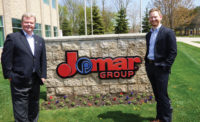
Rick Nortier is Sloan’s product line manager for faucets andSloan Monitored Systems. Nortier also has worked as Sloan’s marketing research manager and as a development engineer where he was involved in the creation of several patented plumbing systems. Nortier has written many white papers and bylined articles related to plumbing technologies. He took some time recently to talk to pme about a number of subjects, including relationships with plumbing engineers, specifiers and designers and the recent introduction of the company’s new BASYS commercial faucet platform.

